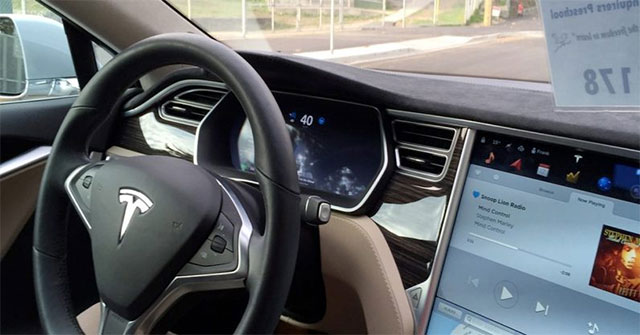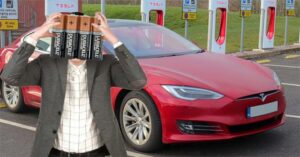
It seems like we may be slowly approaching the era of self-driving cars, with major players in the technology industry like Apple, Google, and particularly Tesla leading the way in technology advancements. The idea of driverless cars is highly ambitious, but despite significant investments and relentless efforts from these companies, fully automated vehicles have not yet achieved widespread usage.
Currently, there are numerous fundamental obstacles that manufacturers must overcome before they can consider introducing a completely safe fully automated car that can successfully tackle intricate tests, while also gaining the trust of users when faced with real-life scenarios. The following are five rationales that elucidate why self-driving cars have yet to become widely utilized globally, despite substantial investments and extensive promotion in recent years.
Sensor
Self-driving cars rely on a variety of sensors, ranging from basic to sophisticated, to monitor and interpret their surroundings in real-time. These sensors enable the cars to identify and detect various objects, including pedestrians, other vehicles, and road signs. Image sensors, in the form of cameras, are utilized to observe and analyze objects. Lidar sensors employ laser technology to measure the distance between the car and other objects. Radar sensors, on the other hand, are responsible for detecting objects, as well as tracking their speed and direction.

The sensors in the car gather data and transmit it to the control system, typically an AI computer. Within this system, the data is meticulously analyzed to enable the car to make precise decisions such as steering, braking, and determining the appropriate braking force. For a completely autonomous car, it is crucial for the sensor system to function flawlessly in every condition and environment, without requiring any human involvement.
Nevertheless, empirical testing has revealed that various factors such as inclement weather, congested traffic, and intricate road signs can have a detrimental impact on the accuracy of the sensor. While Tesla vehicles utilize radar that is less susceptible to adverse weather conditions, the difficulty lies in ensuring that the sensor can consistently detect all objects with the necessary certainty to guarantee the utmost safety for occupants of the vehicle.
To ensure the genuine safety of an autonomous vehicle, its sensor system must function impeccably in all weather conditions worldwide, ranging from the freezing temperatures of Alaska to the scorching heat of Zanzibar. Moreover, it must navigate effortlessly through densely populated cities with intricate traffic scenarios, such as Cairo or Hanoi. This remains an immense hurdle for companies, including Tesla, to overcome.
Artificial intelligence
As previously mentioned, the majority of autonomous vehicles will rely on artificial intelligence and machine learning to analyze data collected from sensor systems. This intelligent processing allows them to make appropriate decisions tailored to each unique situation, functioning as the vehicle’s equivalent of a brain.
AI algorithms are programmed to analyze and recognize the objects detected by the sensor. Their task is to accurately classify these objects. Based on this information, the computer then determines if any action, such as braking or swerving, is necessary for the car to avoid the detected object.

In the future, machines will surpass humans in their ability to detect and classify various tasks. However, at present, there is no assurance that the machine learning algorithms employed in cars are completely secure. It is crucial to establish a standardization process for training, testing, and validating machine learning systems in autonomous vehicles. This necessary step will eventually come to fruition.
Stabilization
As a self-driving car cruises along the road, it undergoes a continual process of learning. It encounters novel roads, identifies unfamiliar objects that were not part of its initial training, and consequently, it must occasionally update its software.
How can we guarantee that the security of the system remains at the same level as the previous version? Additionally, we need to determine if there are any errors or vulnerabilities that arise as a result of updating the software that could impact the performance of the vehicle. It is important to recognize that even the slightest mistake in this scenario could result in severe accidents.
Standards
Currently, the world lacks a globally accepted framework of standards and regulations for autonomous vehicle technology. Given the unique nature of these vehicles, it is crucial to establish new regulations that address each specific function, including automatic lane keeping systems. Consequently, car manufacturers are compelled to adhere to these regulations in order to obtain licenses for their new products.
This problem is not only about safety, but it also encompasses various other areas such as the environment, economy, and society.
Social acceptance
Self-driving cars, especially Tesla vehicles, have been involved in numerous accidents. This poses a challenge not only for those considering purchasing self-driving cars, but also for those who interact with them on the road, in terms of social acceptance.
It is important for every individual to actively participate in the decision-making process concerning the implementation and acceptance of autonomous vehicles. The integration of artificial intelligence systems into traffic is an entirely new concept, raising valid concerns about the safety of our society. Therefore, citizens have the rightful privilege to inquire and question the safety measures surrounding this development.
In order to overcome the final two challenges, it is essential to tackle the first three challenges. The fierce competition within the autonomous vehicle industry shows no signs of slowing down. However, if manufacturers, consumers, inspection agencies, and regulators fail to come together for a meeting, the widespread use of autonomous cars may remain limited to testing on closed roads for many years to come.
- Solve puzzles about Tesla’s self-driving cars and watch videos of Tesla cars driving themselves on real roads


